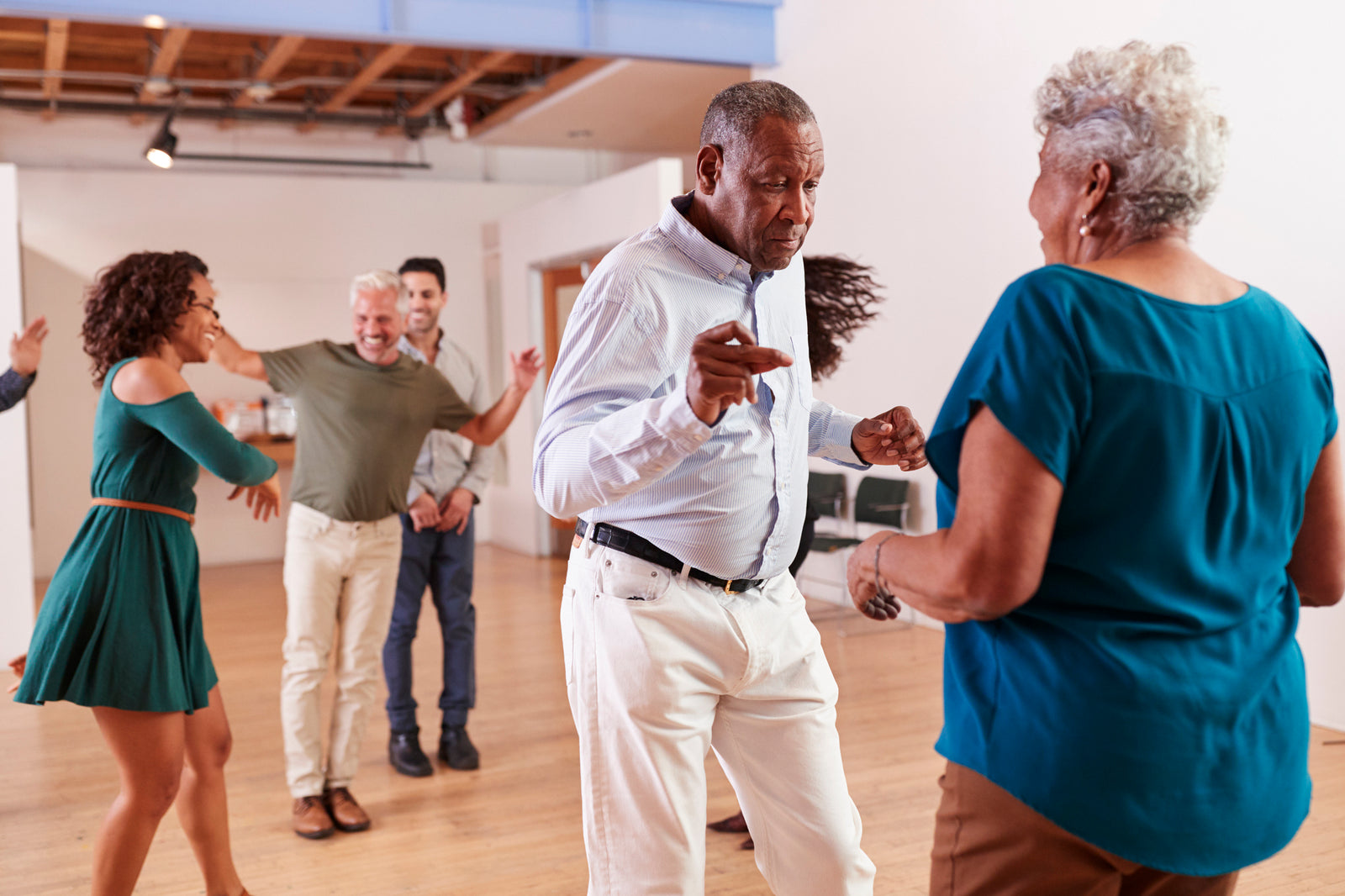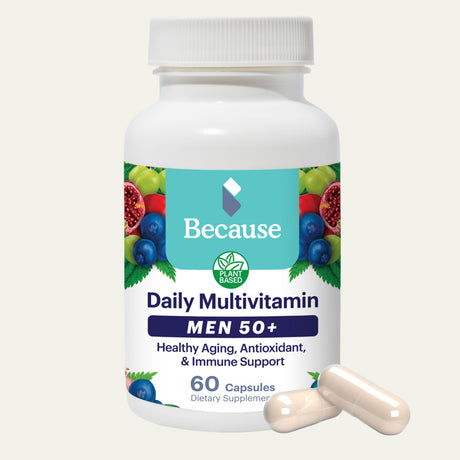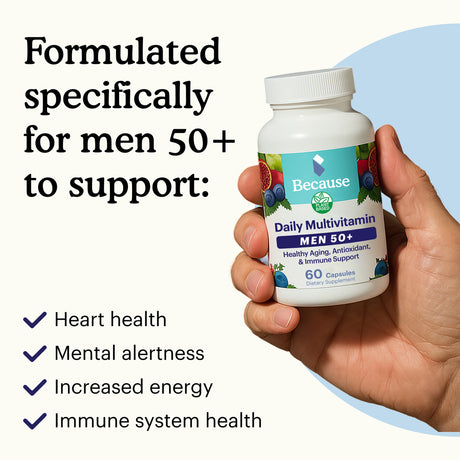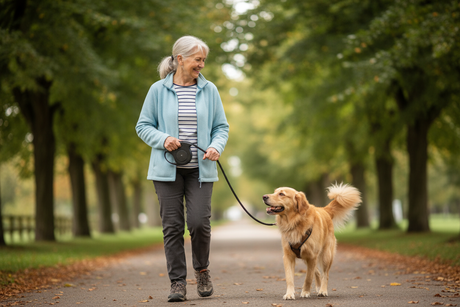Dancing has been a form of expression, art, culture, and rituals for thousands of years — but did you know that dancing also promotes physical and mental health? Whether you enjoy simpler dances to do at home, elegant dances like a ballroom-style waltz, or line dances made to get everyone out on the dance floor, and you’ll enjoy an abundance of health benefits, too.
Physical exercise is crucial to maintaining a healthy life — especially as we get older. Mental health is also crucial during this time, as stressors in life may increase or change. For this reason, it’s essential to find a way to get exercise to promote mental and emotional health.
It doesn’t matter if you’re a beginner or a pro; dancing can be fun and great for your health. Let’s break down the ways dance benefits health and how you can get started.
10 Benefits of Dance Exercise for Seniors
For older adults, dance can support overall health by exercising the body, stimulating the mind, and providing opportunities for social interaction. The following are the social, emotional, mental, and physical health benefits of dancing.
1. Dancing Is a Fun Cardio Workout
All kinds of dance, from ballroom to breakdance, involve movement. As a result, dancing increases the heart rate while promoting oxygen circulation throughout the body. In older adults, the heart rate often slows down. We often aren’t able to partake in the same kinds of exercise we once did, so our hearts don’t get as much cardio. However, the American Heart Association recommends maintaining a heart rate of 75 to 128 beats per minute for good health. Dance is an excellent form of aerobic exercise and cardio for seniors!
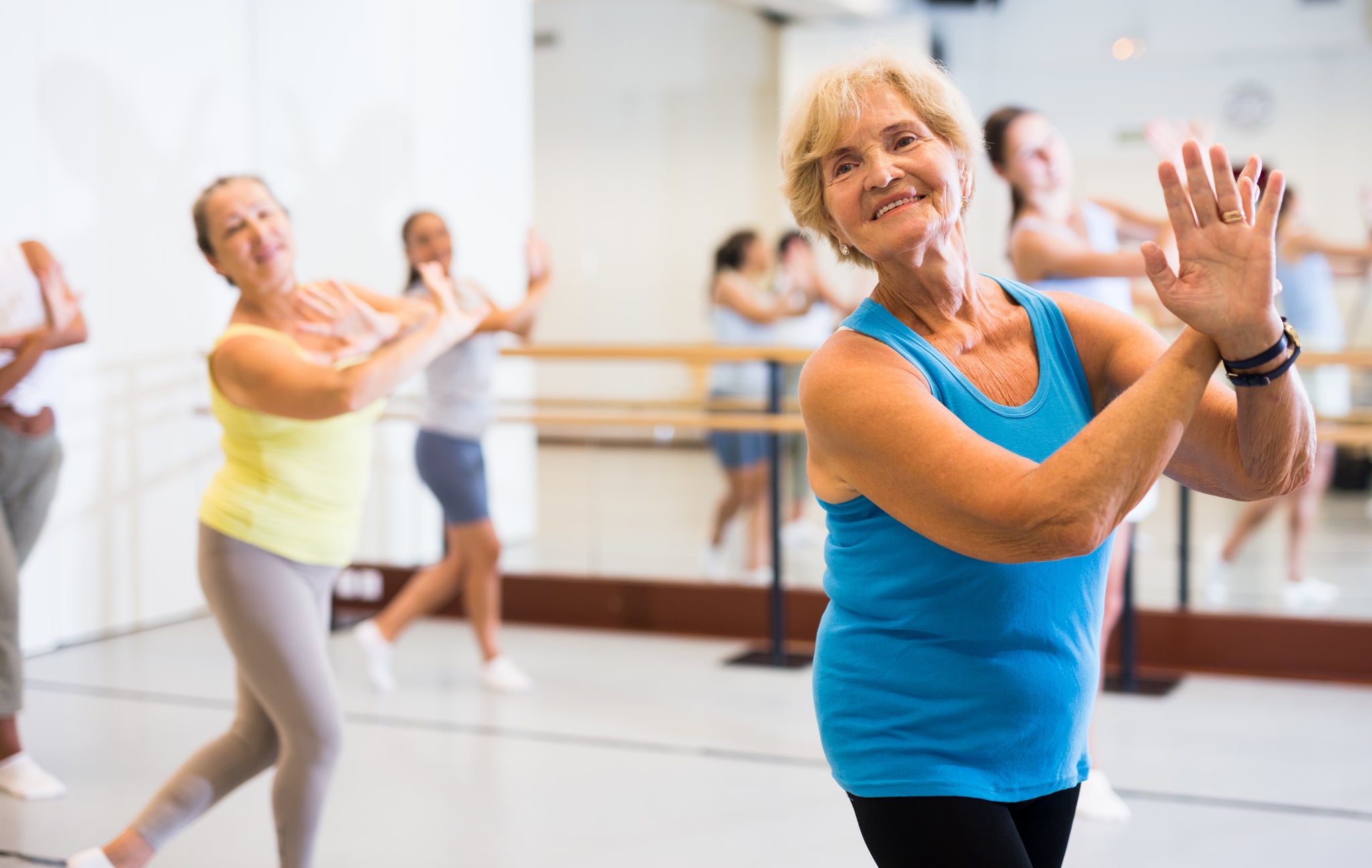
The U.S. Centers for Disease Control and Prevention (CDC) recommends that people aged 65 and older get at least 150 minutes of moderate-intensity physical activity every week. Dancing for pleasure or as a part of an exercise program is a fantastic way to fulfill those requirements. Regular exercise through dance also has the following beneficial effects:
- Improved weight management
- Strengthening of the heart muscle that lowers the risk of heart disease and heart attack
- Less risk of high blood pressure and stroke
- Better control of blood sugar, which could prevent type 2 diabetes
- Lower likelihood of some forms of cancer
- Stronger muscles and bones
2. Dancing Improves Balance and Coordination
As we age, we may lose balance due to weakened muscles. In fact, loss of balance is one of the most common causes of falls in older adults, and as many as 40% of Americans over 65 live with balance problems. While it can be stressful to worry about falling, there are exercises to promote balance — and dancing is one of them.
Dancing requires movement and coordination, promoting balance as you move from step to step. Different types of dancing can also strengthen core muscles, allowing them to better support the spine to improve posture. Over time, this may also contribute to better balance.
Plus, many dances have many steps to memorize and perform in a row. These steps often require hand-eye and foot-eye coordination, and once you start going faster, coordination gets stronger. Dancing is a great way to improve coordination!
3. Dancing Improves Flexibility
Flexibility often declines with age. This occurs as muscles shrink and tendons lose their elasticity, which can lead to problems with mobility. A sedentary lifestyle can worsen the problem, causing muscles in the hips, calves, and legs to grow tighter. With decreased flexibility, you're more at risk of injuries like strains and sprains keeping you from performing everyday activities.
Dance involves the whole body. Your arms, shoulders, back, core, buttocks, legs, and feet all help you perform dance moves. This all-over movement loosens up the muscles and tendons. The positive effects of dance accumulate over time with seniors gradually becoming more flexible. Eventually, these small improvements can add up to positive changes in the ability to walk, squat, and bend.
4. Dancing Is Low Impact
No matter their skill level when it comes to exercise, seniors need to choose their workouts wisely. Running, jogging, and aerobics that involve jumping can be hard on the joints, leading to pain and a risk of injury. As a result, healthcare professionals typically recommend low-impact exercise for older adults. Dancing fits the bill because its movements are gentle on the joints, despite its ability to raise the heart rate.
5. Dancing Relieves Stress and Improves Mood
Like any stage of life comes with its stressors and challenges, and so does old age. You may deal with losing loved ones, having your children move away, physical challenges, or other obstacles that cause stress and worry. Older adults are also susceptible to developing mood disorders like depression.
Cortisol is the hormone responsible for the stress response in our bodies. Left unchecked, it can raise blood pressure, interfere with sleep, and cause weight gain. Previous studies show that dance therapy significantly improves cortisol levels, suggesting it can protect the body from the effects of stress.

Dancing also provides an emotional pick-me-up. When we dance, our bodies release endorphins. Endorphins are feel-good chemicals released by our bodies during exercise and other activities. They are meant to reduce pain and promote pleasure, so during things like exercise and childbirth, endorphins are released by our brains to reduce pain and focus on good feelings instead. Participating in this fun type of aerobic exercise may give you the same effect.
Dance's stress relief and mood-boosting benefits may also lead to better sleep. A study in Spain found that women who participated in an 8-week instructor-led dance program that met three times a week saw significant improvements in sleep quality. Getting more sleep can provide many benefits, from easing stress to reducing the risk of depression, heart disease, type 2 diabetes, and obesity.
6. Dancing Encourages Social Interaction
Dancing is often a social activity! Whether you prefer to dance with just one partner or attend a dance class with others, it’s an opportunity to connect, build relationships, and begin friendships! This perspective is especially important for seniors aging in place and living alone, as they may suffer from isolation and a lack of social support.
Social skills are an essential aspect of emotional health. Our ability to understand someone else’s perspective and respond with kindness and patience is primarily due to emotional intelligence. Emotional health is also important for work ethic, motivation, and having a positive outlook on life — so by socializing, we can strengthen emotional health.
Dancing is a great way to get the physical exercise we need while getting the socializing and human interaction we need to connect with others and thrive. If you’re not part of a dance class, contact your local community centers, gyms, or dance studios to ask about dance programs. There may even be in-person classes at local senior centers, health centers, or churches.
7. Dancing Challenges Your Mind and Memory
Memory is a large part of dancing. You have to memorize various dance moves and learn in what order the moves are performed. As we age, our memory function may also decline due to a health condition or disorder, and dance helps to keep the mind active.
Memory loss looks different for everyone, but the most effective ways to treat memory loss may surprise you. Pursuing hobbies and dancing are some of the most popular ways to boost memory and cognitive function to support brain health.
In one study, participants were divided into three groups. A control group listened to music while singing. Another group enjoyed the music while riding a stationary bike, and a third group got up and danced. Each group was given cognitive tasks before and after listening to the music. The group who danced performed better on the cognitive tasks after the music ended, and they also saw improvements in their energy levels and mood.
8. Dancing Is a Creative Outlet
Creativity isn’t only associated with painting or making art by hand. It involves any activity that allows you to express yourself freely! Dancing is an excellent outlet for creativity and expression as you can integrate whatever moves you’d like, make your dances, and move to your body’s rhythm. This experience helps your body let loose and be creative. Activities involving creative thinking and self-expression have reduced anxiety and stress and improved mood, immune system function, and cognition.
9. Dancing Boosts Self-Confidence
When we learn a new task, our self-esteem and confidence increase. You may struggle at first when you’re learning dance moves, but that’s normal. Once you practice and see your progress, your confidence will skyrocket!
Confidence and self-esteem are vital factors for mental and emotional health. These characteristics are important for those of any age, but especially for seniors. Dancing is a great way to boost confidence and promote self-esteem for older adults.
10. Dancing Can Be Done in a Small Space and Requires No Special Equipment
Although you can dance with a partner or take classes if you wish, you can also enjoy the activity from the comfort of your home. Like pelvic floor exercises, dancing requires only a small amount of space and doesn't involve special equipment. As a result, it’s easy to incorporate dance into daily life, as seen with dancercise for seniors.
Getting started at home can be as simple as putting on a favorite song and doing your own dance steps. You can also watch videos from a dance instructor on YouTube or participate in virtual dance classes.
Types of Dance Fitness for Seniors to Try
The ideas for the types of dance you can do for exercise are seemingly endless. Here are a few options that can be a beneficial workout for seniors:
- Line dancing
- Ballroom dances like the foxtrot and the waltz
- Salsa dancing
- Dance fitness like Jazzercise or Zumba for seniors
- Clogging or tap dancing
- Ballet for seniors
- Chair dancing
How To Get Started with Dancing Exercise for Seniors
Dancing has many benefits, so here are some tips to help you reap these benefits while improving your health!
1. Pick a Style
From ballroom dance classes to ballet barre exercises, there’s a dance style for everyone! A great way to pick a dance style is to watch a video demonstrating a style. Think about what you like and don't like about the dance moves. Then, watch videos about other styles until you find one that appeals to you.
2. Join a Group
Joining a dance class or group is a great way to have added support while you learn how to dance. You’ll also have an instructor there to help you master the moves and perform them with the correct form to prevent injuries or falling. Joining a dance class also helps you socialize, which is important for increasing emotional intelligence. You may also learn a fun dance routine that you can perform for friends and family.
3. Start Grooving
The last step is to start grooving. Simply turn on your favorite songs and start dancing!
Tips for Dancing Success in Your Senior Years
To enjoy dancing to the fullest, follow these tips:
Talk to Your Doctor
Before doing any new exercise for the first time, talk to your health care provider. They can help you decide if dance is a safe activity for you.
Start Slowly and Put Safety First
If you have impaired balance or are at high risk of falling, don’t attempt to dance alone without nearby help. You can also scale dances down to do smaller movements. Once you get more comfortable with new moves, you can try more difficult steps — such as spins and larger movements.
Listen to Your Body
It’s easy to get caught up in fun activities and get carried away in the moment. While you should let the music take you away, pay attention to any physical symptoms that arise — such as pain or severe shortness of breath. While you may experience mild burning in your muscles the first few times you get up and moving, you shouldn’t feel any sharp, stabbing discomfort. If you do, take a break.
Don’t Let Common Ailments Get in Your Way
Once your doctor has approved dance as an exercise for you, take steps to address any challenges to exercise. If you live with incontinence, you may be concerned about leaking during dance movements or classes. But don’t worry. With our maximum protection incontinence underwear and premium pads and boosters, you can stay fresh and dry for the whole class and dance worry-free!
If joint pain makes it difficult for you to fully enjoy moving to the music, Because Ultimate Joint Support may help with its blend of glucosamine, chondroitin, and turmeric that eases inflammation and supports overall joint health. Learn more about the benefits of our joint health supplement and order some online today.
Sources:
American Heart Association. (n.d.). Target Heart Rates. https://www.heart.org/en/healthy-living/fitness/fitness-basics/target-heart-ratesCenters for Disease Control and Prevention. (n.d.). Older Adults. Physical Activity Basics. https://www.cdc.gov/physicalactivity/basics/older_adults/index.htm
Centers for Disease Control and Prevention. (n.d.). Physical Activity. Physical Activity Basics. https://www.cdc.gov/physicalactivity/basics/pa-health/index.htm
Health in Aging. (n.d.). Basic Facts: Balance Problems. https://www.healthinaging.org/a-z-topic/balance-problems/basic-facts#:~:text=All%20in%20all%2C%20almost%2040,75%20years%20fall%20each%20year.
PubMed Central (PMC). (2016). The Benefits of Dancing for Older Adults. https://www.ncbi.nlm.nih.gov/pmc/articles/PMC5003566/
Goodnet. (n.d.). Dance Like Nobody's Watching: Science Says It's Good for You. https://www.goodnet.org/articles/dance-like-nobodys-watching-science-says-its-good-for-you
Springer Link. (2022). Dance Therapy as a Form of Physical Activity for Older Adults: A Scoping Review. https://link.springer.com/article/10.1007/s10465-022-09368-z
PubMed. (2016). The Effects of Dance Interventions on Cognition in Older Adults: A Systematic Review. https://pubmed.ncbi.nlm.nih.gov/27569177/
Centers for Disease Control and Prevention. (n.d.). Sleep and Sleep Disorders. https://www.cdc.gov/sleep/index.html
Forbes. (2018). Here's How Creativity Actually Improves Your Health. https://www.forbes.com/sites/ashleystahl/2018/07/25/heres-how-creativity-actually-improves-your-health/?sh=5bc4a5cb13a6
PLOS ONE. (2015). The Effects of Dancing on Psychological Well-Being and Physical Self-Perception in Adults with Various Levels of Dance Experience. https://journals.plos.org/plosone/article/file?type=printable&id=10.1371/journal.pone.0122866#:~:text=Dancing%20is%20a%20popular%20form,esteem%2C%20and%20improve%20psychological%20wellbeing
